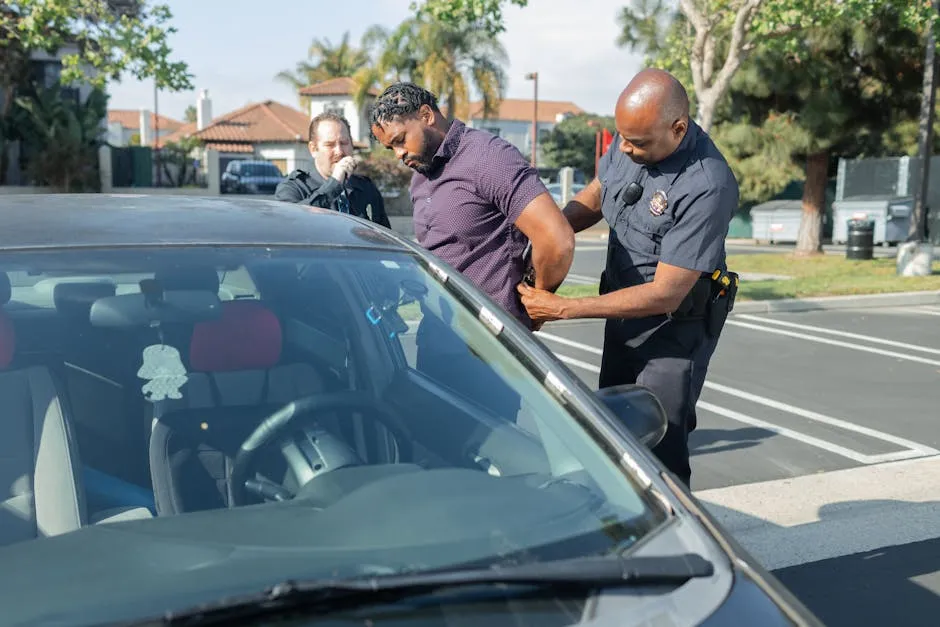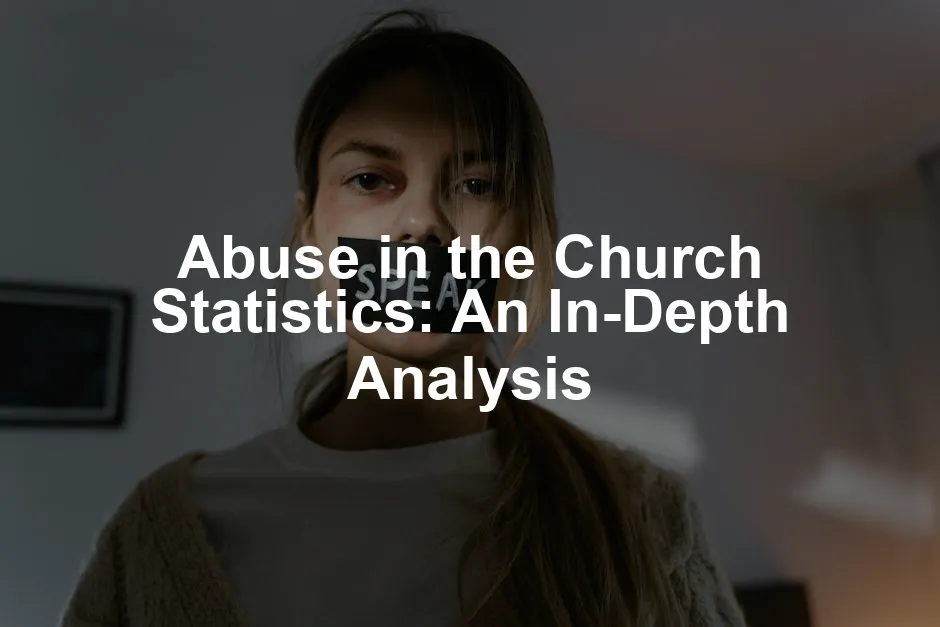Introduction
Abuse within churches is more than just a scandal; it’s a crisis. Sadly, religious institutions have witnessed alarming rates of abuse, particularly sexual abuse. A study reported that over 7,000 claims of sexual abuse were made to just three insurance companies from 1987 to 2007. This chilling statistic lays bare the prevalence of abuse in faith settings, highlighting a deep-rooted issue that demands our attention. Why discuss this topic? For starters, churches hold a unique position in society, often viewed as bastions of trust. When abuse occurs, it shakes the very foundation of that trust. Victims of abuse in churches often face additional hurdles in seeking justice, including fear of ostracism and doubts about being believed. This makes victim advocacy crucial. We must create spaces where survivors feel safe to speak out, and where accountability is not just a word, but a practice. In this context, understanding trauma is essential. Consider reading “The Body Keeps the Score: Brain, Mind, and Body in the Healing of Trauma” by Bessel van der Kolk. This book dives deep into the impact of trauma on the body and mind, providing insights that are crucial for understanding the experiences of survivors. The goal of this article is simple yet powerful: to provide an extensive look at the statistics and trends related to abuse in churches. We aim to illuminate the need for reform and prevention strategies, ensuring that places meant for spiritual growth do not become environments of fear and exploitation. By analyzing the data, we can advocate for meaningful changes that protect the most vulnerable among us.
Understanding Abuse in Religious Contexts
Definition of Abuse in Religious Settings
Abuse in religious contexts manifests in various forms. Sexual abuse is perhaps the most notorious, involving unwanted sexual advances or contact. Emotional abuse, often overlooked, can be equally damaging. This type of abuse might include manipulation, intimidation, and psychological harm inflicted by those in authority. Physical abuse, while less common, still occurs and can leave both physical and emotional scars. Positions of power within churches create unique vulnerabilities. Clergy and religious leaders wield considerable influence, often leading congregants to trust them implicitly. This dynamic can make it challenging for victims to come forward. Victims may feel pressured to remain silent, fearing that speaking out could lead to disbelief or even alienation from their community.Historical Context
The history of abuse within churches is fraught with shameful incidents. High-profile cases, particularly within the Catholic Church, have shaped public perception. Investigations revealed that nearly 2,000 children were abused by 451 Catholic clergy in Illinois alone from 1950 to 2019. This is just one example of many, illustrating how systemic issues have been ignored for far too long. Protestant churches have also faced scrutiny. The Southern Baptist Convention has had to confront allegations of abuse that affected hundreds of victims over decades. These historical contexts show that abuse is not confined to one denomination. It is a pervasive issue that crosses religious boundaries and impacts communities deeply. Acknowledging this history is vital for understanding current dynamics. Only through awareness can we hope to foster a culture of accountability and change. The statistics tell a sobering story, but they also serve as a call to action for all faith communities.
Key Statistics on Abuse in Churches
General Statistics
Abuse within religious institutions is a serious concern, with staggering statistics highlighting the prevalence of such incidents. From 1987 to 2007, insurance companies received approximately 7,095 claims of sexual abuse tied to churches. This statistic alone paints a grim picture of the issue facing faith communities. A survey indicated that 3% of women attending a congregation reported experiencing clergy sexual misconduct, with 92% of these incidents occurring in secrecy. Considering the average size of a congregation, this suggests that in a typical church of 400 members, around 7 women could be victims of such misconduct at any given time. The sheer scale of abuse reported is astonishing. A survey of 6,000 United Methodists revealed that half of the women and a third of the men reported being victims or witnesses of sexual harassment or misconduct within their congregations. Moreover, 1 in 8 Protestant senior pastors acknowledged that a church staff member had sexually harassed a member of the congregation. Such alarming statistics underline the urgent need for accountability and reform within religious settings.
Denominational Insights
Catholic Church
The Catholic Church has faced intense scrutiny over sexual abuse scandals, with numerous reports shedding light on the extent of the problem. A significant report by the Illinois Attorney General revealed that nearly 2,000 children were abused by 451 clergy members between 1950 and 2019. This harrowing finding emphasizes the Church’s long-standing issues with abuse and cover-up. The ongoing impact of historical cases is evident, as settlements and legal actions continue to emerge in response to these revelations. Moreover, the John Jay Report estimated that around 4% of Catholic priests in the United States have been the subject of allegations of child sexual abuse. This statistic suggests that thousands of victims may have been affected, with the Catholic Church paying out over $3 billion in compensation to victims since the 1980s. The ramifications of these cases extend beyond individual suffering; they erode trust in religious leadership and the institutions meant to provide spiritual guidance.
Protestant Churches
Protestant churches are not immune to the crisis of sexual abuse. A study found over 300 alleged child sexual abuse cases reported in Protestant congregations between 1999 and 2014. Much like the statistics related to the Catholic Church, these incidents often occurred on church grounds or at the offender’s home, predominantly involving Caucasian male clergy or youth pastors. The Southern Baptist Convention has also reported approximately 700 victims, mainly children, abused by church leaders and staff, with many attempts to silence survivors. The lack of centralized authority in Protestant denominations can hinder comprehensive responses to abuse, making it challenging to track and address these incidents effectively. A survey indicated that 10% of Protestants under age 35 left their church due to unresolved sexual misconduct issues, highlighting the disconnect between church leadership and congregants regarding the seriousness of these concerns.
Other Denominations
Other denominations, including groups like the Mormon Church and Jehovah’s Witnesses, have also reported significant sexual abuse allegations. In the Mormon Church, a jury awarded $2.28 billion against a perpetrator, implicating the local church for failing to report abuse adequately. Jehovah’s Witnesses have faced scrutiny for not reporting allegations to secular authorities, with many cases remaining hidden due to internal policies that prioritize secrecy over transparency. A grand jury report in Pennsylvania detailed how church leaders in six dioceses shielded hundreds of priests accused of abusing over 1,000 young victims. This pattern of cover-ups is not limited to one specific denomination but is a pervasive issue across various religious organizations. The statistics surrounding abuse in churches illustrate a pressing need for reform. The consequences of such abuse extend beyond individual victims, impacting entire communities and faith institutions. Addressing this crisis requires ongoing awareness, education, and a commitment to transparency and accountability within religious organizations.
Factors Contributing to Abuse
Power Dynamics
Churches often operate under a hierarchical structure. This can create a power imbalance between clergy and congregants. Leaders hold significant authority, leading to an environment where abuse can flourish. When a member of the clergy is involved, the trust placed in them can be misplaced. Victims may feel pressured to remain silent, fearing disbelief or ostracism. Abuse can thrive in such settings. Reports indicate that many victims hesitate to speak out due to fear of repercussions. They worry that their claims will be dismissed or that they will face backlash from their community. This dynamic can result in a culture of silence, enabling perpetrators to continue their actions without fear of consequences. The lack of accountability within the church hierarchy often leads to cover-ups of abuse incidents. Many churches lack proper oversight mechanisms. Without checks and balances, reports of misconduct can be ignored, allowing abusers to operate unchecked. This absence of accountability can embolden potential offenders. In some instances, leaders may prioritize the church’s reputation over the safety of congregants. Such priorities can lead to a tragic cycle of abuse and cover-up, perpetuating harm within the community.
Grooming and Manipulation Techniques
Perpetrators often utilize grooming techniques to manipulate victims, especially in faith-based settings. Grooming involves establishing trust and emotional connections with potential victims. Offenders may start by gaining the victim’s affection, often offering gifts or special attention. This initial kindness can create a dependency, leading victims to trust their abusers implicitly. In many cases, these grooming behaviors go unnoticed by families or church officials. Victims may feel special, believing they share a unique bond with their abuser. This emotional manipulation can disarm victims, making it difficult for them to recognize the abusive nature of the relationship. Abusers may also isolate their victims, further entrenching their control. By creating barriers between victims and their families or peers, offenders can maintain the secrecy of their actions. This isolation can exacerbate feelings of shame and confusion in the victims, complicating their ability to seek help. Understanding these grooming behaviors can aid in recognizing the signs of abuse and protecting potential victims.
Cultural Factors
Cultural factors play a significant role in the underreporting of abuse within religious settings. Many survivors face stigma associated with disclosing their experiences. Fear of retaliation from their communities can deter victims from coming forward. Survivors often worry about being ostracized or labeled as troublemakers. In some religious contexts, discussing abuse may be considered taboo. Individuals may prioritize loyalty to their faith community over personal safety. This dynamic can create an environment where victims feel trapped, unsure of how to seek help. They may fear that reporting abuse will lead to a loss of community support and faith. Additionally, misconceptions about abuse can further complicate the situation. Many may believe that abuse is uncommon in places of worship, leading to disbelief when allegations arise. This societal disbelief can discourage victims from speaking out, perpetuating the cycle of silence. To create a safer environment, communities must address these cultural factors and foster open discussions about abuse and its consequences.
Consequences of Abuse
Impact on Victims
The consequences of abuse extend far beyond the immediate trauma. Victims often face emotional and psychological challenges that can persist for years. Many suffer from post-traumatic stress disorder (PTSD), anxiety, and depression following their experiences. Statistics reveal that nearly 30% of abuse survivors develop PTSD, significantly impacting their quality of life. Victims may also encounter social isolation. The stigma surrounding abuse can lead to feelings of shame and self-blame. Many find it difficult to engage in relationships, fearing that others will not understand their experiences. This isolation can exacerbate mental health issues, leading to a downward spiral of despair. Moreover, studies indicate that survivors of abuse are at a higher risk for substance abuse. They may turn to drugs or alcohol as coping mechanisms, seeking relief from their emotional pain. This can create a cycle of addiction that further complicates their recovery. Additionally, the emotional toll of abuse can affect victims’ ability to maintain employment or pursue education. The long-term effects of abuse can hinder personal growth and stability, impacting survivors’ lives for years to come. In summary, the consequences of abuse are profound and multifaceted. Survivors often grapple with emotional and psychological scars that can shape their lives in significant ways. Acknowledging these impacts is crucial for fostering understanding and support for those affected.
Prevention and Accountability
Current Efforts
Churches across the globe are waking up to the alarming issue of sexual abuse. Initiatives are sprouting up like daisies in a field, aimed at tackling this problem head-on. One notable effort is the implementation of training programs for clergy and staff. These programs are designed to educate church leaders about abuse prevention and the importance of creating safe environments for all congregants. Policy reforms are also in the spotlight. Many churches are revising their existing codes of conduct, ensuring that clear guidelines are established. These reforms include stricter background checks for those working with vulnerable populations, especially children. The goal is simple: to keep potential offenders at bay and ensure that leaders are held to a higher standard. Support systems for victims are gaining traction as well. Some churches are establishing confidential reporting mechanisms, allowing survivors to come forward without fear of judgment. These systems aim to provide immediate assistance and resources, ensuring that victims are heard and supported. Additionally, partnerships with local advocacy groups are forming to create comprehensive support networks for survivors, aiding them on their path to healing.
Recommendations for Improvement
Despite these efforts, there’s still much room for growth. Churches must prioritize transparency. Open communication about abuse allegations can foster trust within communities. When congregants see their leaders addressing these issues head-on, it creates a culture of accountability. Implementing better reporting mechanisms is essential. Many victims hesitate to report abuse due to fears of disbelief or retribution. Churches need to create an environment that encourages reporting. This can be achieved through anonymous hotlines, clear processes, and public awareness campaigns that highlight the importance of speaking out. Engaging the community is another vital step. Churches should host workshops and forums to educate their congregations about abuse and prevention strategies. This not only raises awareness but also empowers community members to recognize the signs of abuse. The more informed the congregation is, the more likely they are to stand up against it.
Role of Legal Action
Legal frameworks play a crucial role in holding institutions accountable for abuse. Lawsuits against churches have become a powerful tool for survivors seeking justice. These legal actions not only bring attention to individual cases but also expose systemic failures within the institutions. Advocacy for stronger laws and regulations is necessary. Survivors often find themselves facing significant hurdles when seeking justice due to outdated statutes of limitations. By pushing for reform, advocates can help ensure that victims have the opportunity to pursue legal action, regardless of when the abuse occurred. Furthermore, legal action can lead to significant changes within religious organizations. When churches face the prospect of financial repercussions, they often take action to prevent future occurrences. This creates a ripple effect, prompting other institutions to reevaluate their policies and practices. In conclusion, while efforts to address abuse within churches are underway, continuous improvement is essential. By prioritizing transparency, enhancing reporting mechanisms, and advocating for stronger legal frameworks, churches can take strides towards a safer environment for all congregants. The responsibility lies not just with the institutions but also with the communities they serve, ensuring that everyone plays a part in ending the cycle of abuse.
Conclusion
Abuse in the church is a deeply troubling issue that plagues many faith communities. Throughout this article, we’ve examined alarming statistics that highlight the prevalence of abuse, particularly sexual abuse, within various religious institutions. The data reveals a shocking pattern, with nearly 2,000 children abused by 451 Catholic clergy in Illinois alone from 1950 to 2019, and reports indicating over 7,000 claims of sexual abuse made to insurance companies between 1987 and 2007. These statistics are not mere numbers; they represent real lives affected by betrayal and trauma. Victims often face immense challenges in seeking justice, including fear of disbelief and ostracism from their communities. This reality underscores the importance of victim advocacy and the need for transparent accountability measures within religious organizations. Ongoing awareness and reform are essential. We must actively engage in conversations about abuse, ensuring that faith communities do not become breeding grounds for predators. By fostering an environment where survivors feel safe to speak out, we can work towards meaningful change. As readers, your role is crucial. Advocate for policies that protect the vulnerable in faith settings. Support initiatives aimed at reforming how churches handle allegations of abuse. Only together can we shine a light on this dark reality and push for a future where churches are safe havens for all. Let’s unite in the fight against abuse, making it clear that silence is no longer an option. Accountability must be a priority, and every voice matters in this critical mission.FAQs
What should I do if I suspect abuse in my church?
If you suspect abuse in your church, it’s essential to act swiftly. Start by documenting any evidence or observations related to the suspected abuse. This documentation can be vital for any investigation that follows. Next, report your suspicions to church leadership or a designated authority within your religious institution. Many churches have policies for handling such allegations. If you feel uncomfortable reporting internally, reach out to local law enforcement or child protective services for guidance. Remember, your safety and the safety of potential victims are paramount. You can also contact organizations specializing in abuse cases for confidential support and advice.
Are there resources for survivors of church-related abuse?
Absolutely! Survivors of church-related abuse can find support through various organizations and hotlines. Here are a few resources: – **The Survivors Network of those Abused by Priests (SNAP)**: A national organization offering support to survivors and fighting for accountability. – **RAINN (Rape, Abuse & Incest National Network)**: Provides a 24/7 hotline and resources for survivors of sexual abuse. – **Childhelp**: Offers a national child abuse hotline and resources for both children and adults affected by abuse. – **Local Counseling Services**: Many communities have counseling services specializing in trauma and abuse recovery. These organizations provide critical support and can help survivors navigate the complex feelings following abuse.
What are the legal ramifications for churches that fail to address abuse?
Churches that fail to address abuse may face severe legal consequences. These can include civil lawsuits from victims seeking damages for emotional and psychological harm. If a church is found to have covered up abuse or failed to report it, they might also face criminal charges, depending on the jurisdiction. Furthermore, public trust can erode, leading to a decline in attendance and financial support. Legal ramifications can extend to individual clergy members as well, particularly if negligence is proven in their duty to protect vulnerable individuals.
How can churches better protect their congregants from abuse?
Churches can adopt several strategies to enhance the safety of their congregants. First, implementing comprehensive training programs for staff and volunteers on recognizing and preventing abuse is essential. Regularly updating policies regarding interactions with minors and vulnerable individuals can foster a safer environment. Establishing clear reporting mechanisms for allegations of abuse ensures that concerns are addressed promptly and appropriately. Engaging the community through educational workshops can also raise awareness about abuse signs and prevention. Lastly, fostering an open dialogue about abuse within the congregation can help dismantle the culture of silence and encourage individuals to speak up.
All images from Pexels




